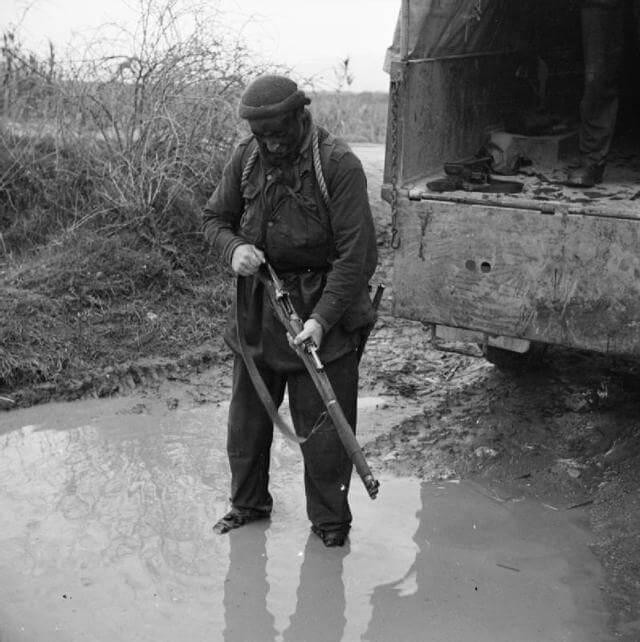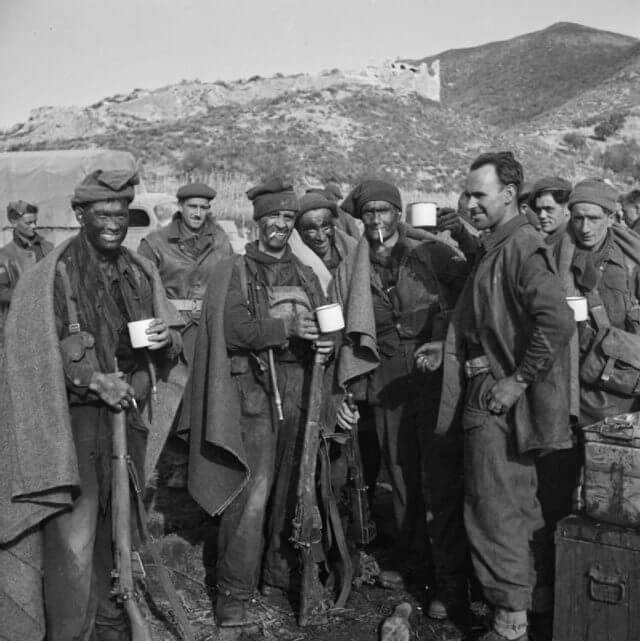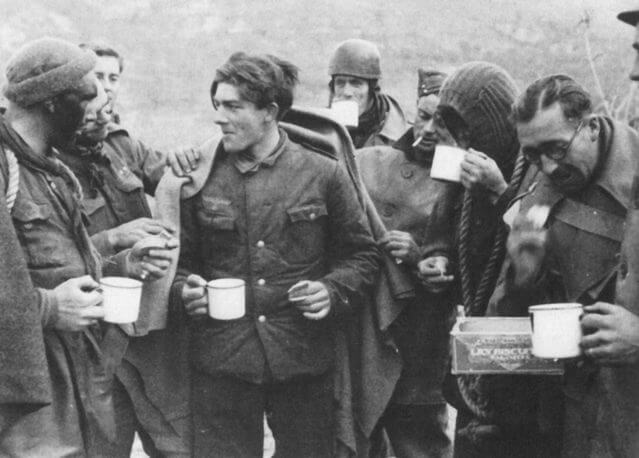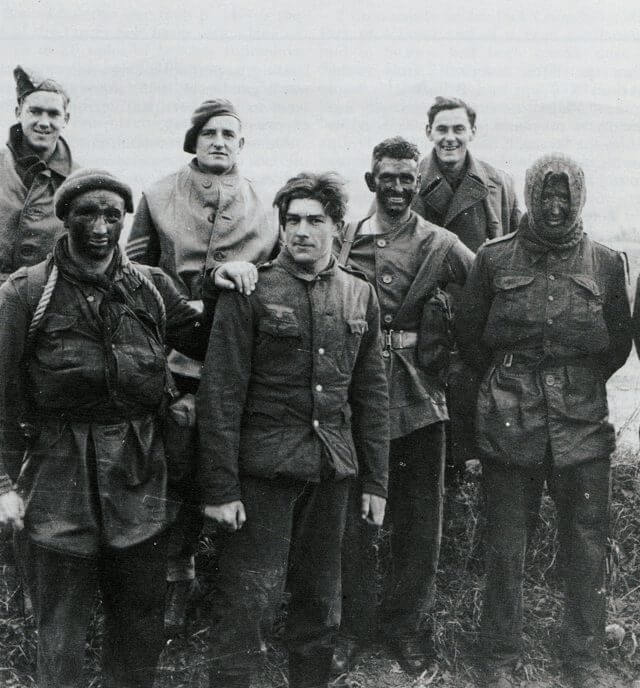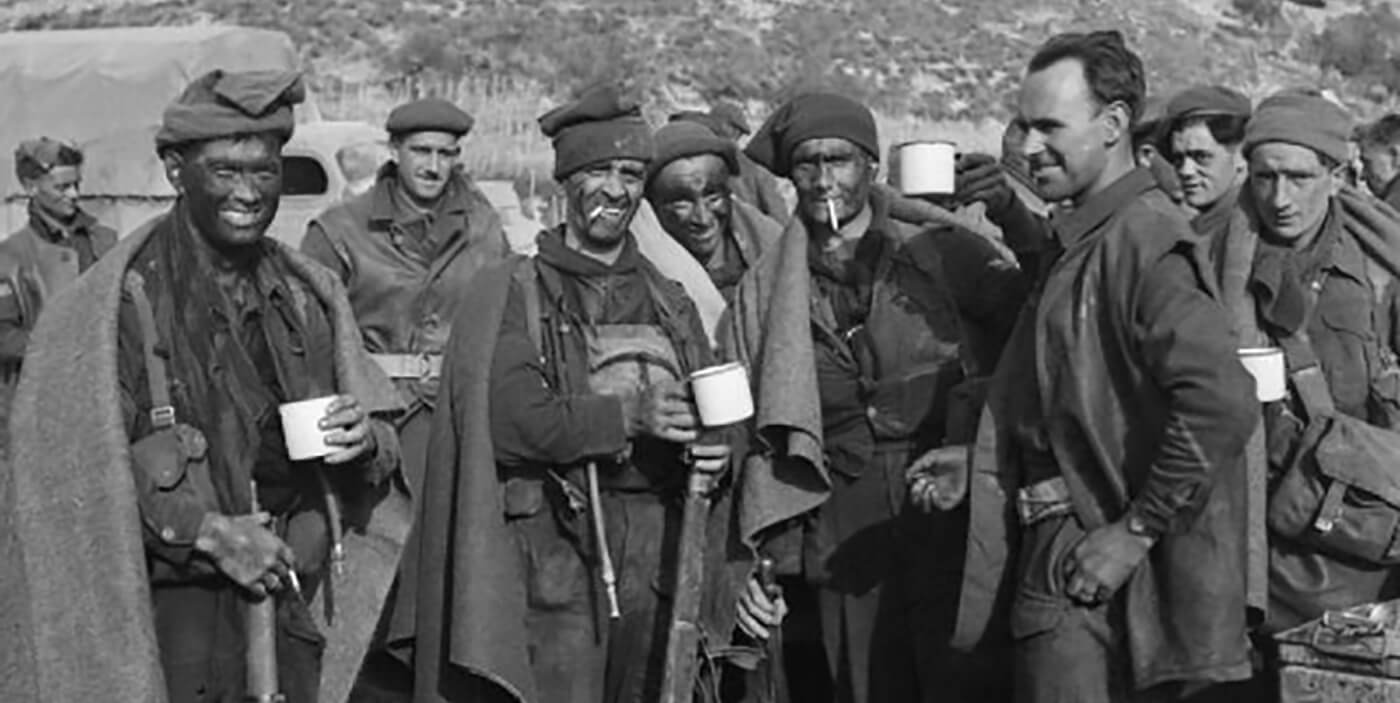| Page Created |
| November 9th, 2022 |
| Last Updated |
| November 13th, 2022 |
| Country |
 |
| Special Forces |
| Commandos |
| December 29th, 1943 – December 30th, 1943 |
| Operation Partridge |
| Objectives |
- Create a diversion to cover the withdrawal of X Corps in preparation for its proposed assault across the Garigliano river.
- Draw German troops from the areas where the Allied plan to cross Garigliano river.
- To create this diversion the men of No. 9 Commando have three objectives:
- Capture a hill called Monte d’Argento located about two thousand metres Northwest of the mouth of the Garigliano river.
- Destroy the bridge that allows the state road No. 7 to cross the river.
- Capture a strip of land Northeast of the mouth of the river that divides it from the coast.
| Operational Area |
The mouth of the Garigliano river.
| Unit Force |
- No. 9 Commando
- Landing Ships Infantry, Medium H.M.S. Princess Beatrix and the H.M.S. Royal Ulsterman
- Landing Craft Assault
| Opposing Forces |
- German Wehrmacht
| Operation |
After the allied command, abandons the idea of crossing the Garigliano River near the mouth of the river, they start preparing a diversion operation in that area called “Operation Partridge”.
This operation aims to convince the Germans to weaken their defences on points of the front where the allies are planning attacks for the crossing of the Garigliano-Gari-Rapido rivers by forcing them to strengthen their troops in the western part of the front.
No. 9 Commando is selected to conduct the operation. The following weeks are spent preparing for this operation. Every night some kind of test and training is carried out by the Commandos. The planners identify an area that is more or less similar to the terrain on which the Commandos will have to operate and, with the landing craft made available from, the Landing Ships Infantry, Medium H.M.S. Princess Beatrix and the H.M.S. Royal Ulsterman, a real dress rehearsal is performed.
During this intensive period of training even the limited Christmas celebrations are postponed. Since the rain falls profusely during this period and mud and water are everywhere, the real danger of the operation is represented by the retreat over the Garigliano river. The river is about a hundred meters wide and is known for its strong current. To cross the river on their retreat the use of DUKW amphibious vehicles is requested and granted.
To create the diversion the men of No. 9 Commando have three objectives:
- Capture a hill called Monte d’Argento located about two thousand metres Northwest of the mouth of the Garigliano river.
- Destroy the bridge that allows the state road No. 7 to cross the river.
- Capture a strip of land Northeast of the mouth of the river that divides it from the coast.
The three objectives are situated in an imaginary triangle and the idea of Lieutenant Colonel R.J.F. Tod, the commander of No. 9 Commando and the operation is to land halfway along the side of the triangle running parallel to the coast. From here the assault force divides into three groups with group attacking a single objective. An operational exercise is performed on the night of December 27th/29th; and completed successfully.
On the evening of December 29th, 1943, No. 9 Commando embarks on the two Landing Ship Infantry, Medium (LSI,(M)), the H.M.S. Royal Ulsterman and the H.M.S. Princess Beatrix. The two ships lower their Landig Craft Assault at 21:30, about 9,600 meters of the landing point, in front of the friendly beaches. Due to an incorrect approach route to the landing point, attributed to the pilots Landing Craft Assault of the US Navy, the commandos disembark are about 3,200 meters Southeast of the mouth of the river. Commander Tod realises the error and alerts his second in command, the Major Clark. They decide to continue and follow the coast eventually disembarking about 1,000 meters from the scheduled landing beach. The assault group has already accumulated 90 minutes of delay on the set times and land at 00:35.
One Landing Craft Assult suffers a rudder failure and fails to land the men aboard. The three groups are grouped together and at 01.00 they establish their precise position on the coast.
The Y group consists of 120 men from Troop No. 1 and No. 2 and is commanded by Captain J. McNeil. Their goal is Monte Argento.
The approach is slowed down by the greater distance from the new landing point, the irrigation canals to be crossed and the barriers with mines and barbed wire. The Y group reaches its goal after 2 hours of marching. Here the group splits into two troops. One attacks the top of the hill and the other controls the houses and blocks the road to the north. The hill is defended with mines and booby traps with the enemy concentrated in the north. The group knocks out a German tank Panzerkampfwagen Mk III found in a cave. Six Germans are killed, and four others are captured, the losses of the Y group are four men.
On their way back to the beach, Y group meets Troop No. 6 (Z group) who are heading towards their goal, the bridge on the state road No. 7. As they approach, they hear the unmistakable sound of bagpipes playing Pwbrrachd of Donald Dubh. In response McNeil orders his piper to play the march of the troop, Green Hills. This way the two groups avoid possible friendly fire.
Captain Cameron, is in command of Z Group, comprising of Troops No. 4 and No. 6. They advance very slowly to their objective, reaching the bridge at 05:00. With the support of artillery, the group manages to take out a German casemate, without suffering any losses. The commandos, equipped with a rope bridge, cross the river about 2,300 meters from the mouth, bringing their wounded and a certain number of German prisoners to the friendly bank of the river.
Meanwhile X group, crosses the tongue of land near the mouth of the river (the third target) and take one prisoner. Unfortunately, five men are killed, being victims of the explosion of a mine. The groups X and Y reunite and return with DUKW amphibious vehicles to the friendly lines at 07.30.
No. 9 Commando loses nine men while twenty-one are wounded in this operation. They kill sixteen Germans, and twenty-eight others were taken prisoner.
Operation Partridge achieves the desired effect. The Commandos persuade the enemy to strengthen this part of the line of defense. This allows the Allies to improve activities in other areas. The men of No. 9 Commando celebrate Christmas on January 1st, 1944.
| Multimedia |
